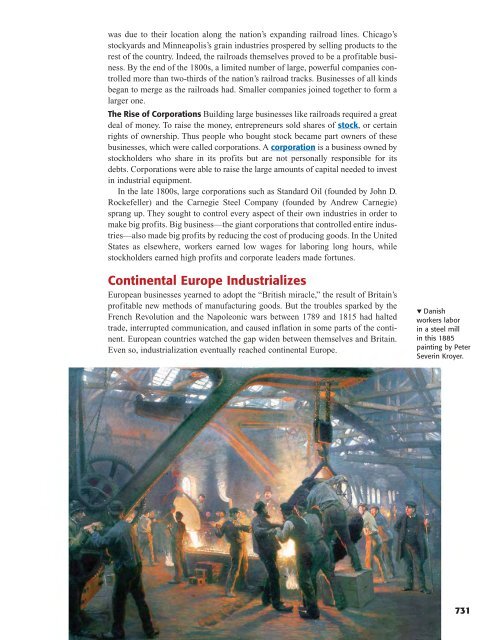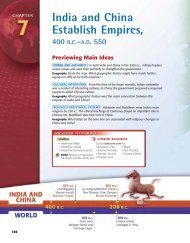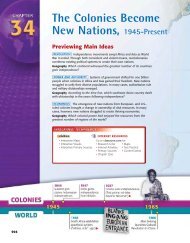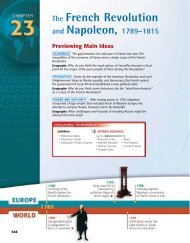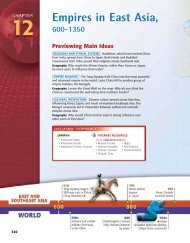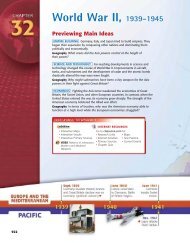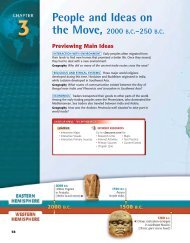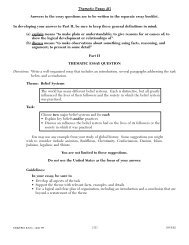The Industrial Revolution, 1700– 1900 Previewing Main Ideas
The Industrial Revolution, 1700– 1900 Previewing Main Ideas
The Industrial Revolution, 1700– 1900 Previewing Main Ideas
You also want an ePaper? Increase the reach of your titles
YUMPU automatically turns print PDFs into web optimized ePapers that Google loves.
was due to their location along the nation’s expanding railroad lines. Chicago’s<br />
stockyards and Minneapolis’s grain industries prospered by selling products to the<br />
rest of the country. Indeed, the railroads themselves proved to be a profitable business.<br />
By the end of the 1800s, a limited number of large, powerful companies controlled<br />
more than two-thirds of the nation’s railroad tracks. Businesses of all kinds<br />
began to merge as the railroads had. Smaller companies joined together to form a<br />
larger one.<br />
<strong>The</strong> Rise of Corporations Building large businesses like railroads required a great<br />
deal of money. To raise the money, entrepreneurs sold shares of stock, or certain<br />
rights of ownership. Thus people who bought stock became part owners of these<br />
businesses, which were called corporations. A corporation is a business owned by<br />
stockholders who share in its profits but are not personally responsible for its<br />
debts. Corporations were able to raise the large amounts of capital needed to invest<br />
in industrial equipment.<br />
In the late 1800s, large corporations such as Standard Oil (founded by John D.<br />
Rockefeller) and the Carnegie Steel Company (founded by Andrew Carnegie)<br />
sprang up. <strong>The</strong>y sought to control every aspect of their own industries in order to<br />
make big profits. Big business—the giant corporations that controlled entire industries—also<br />
made big profits by reducing the cost of producing goods. In the United<br />
States as elsewhere, workers earned low wages for laboring long hours, while<br />
stockholders earned high profits and corporate leaders made fortunes.<br />
Continental Europe <strong>Industrial</strong>izes<br />
European businesses yearned to adopt the “British miracle,” the result of Britain’s<br />
profitable new methods of manufacturing goods. But the troubles sparked by the<br />
French <strong>Revolution</strong> and the Napoleonic wars between 1789 and 1815 had halted<br />
trade, interrupted communication, and caused inflation in some parts of the continent.<br />
European countries watched the gap widen between themselves and Britain.<br />
Even so, industrialization eventually reached continental Europe.<br />
▼ Danish<br />
workers labor<br />
in a steel mill<br />
in this 1885<br />
painting by Peter<br />
Severin Kroyer.<br />
731


